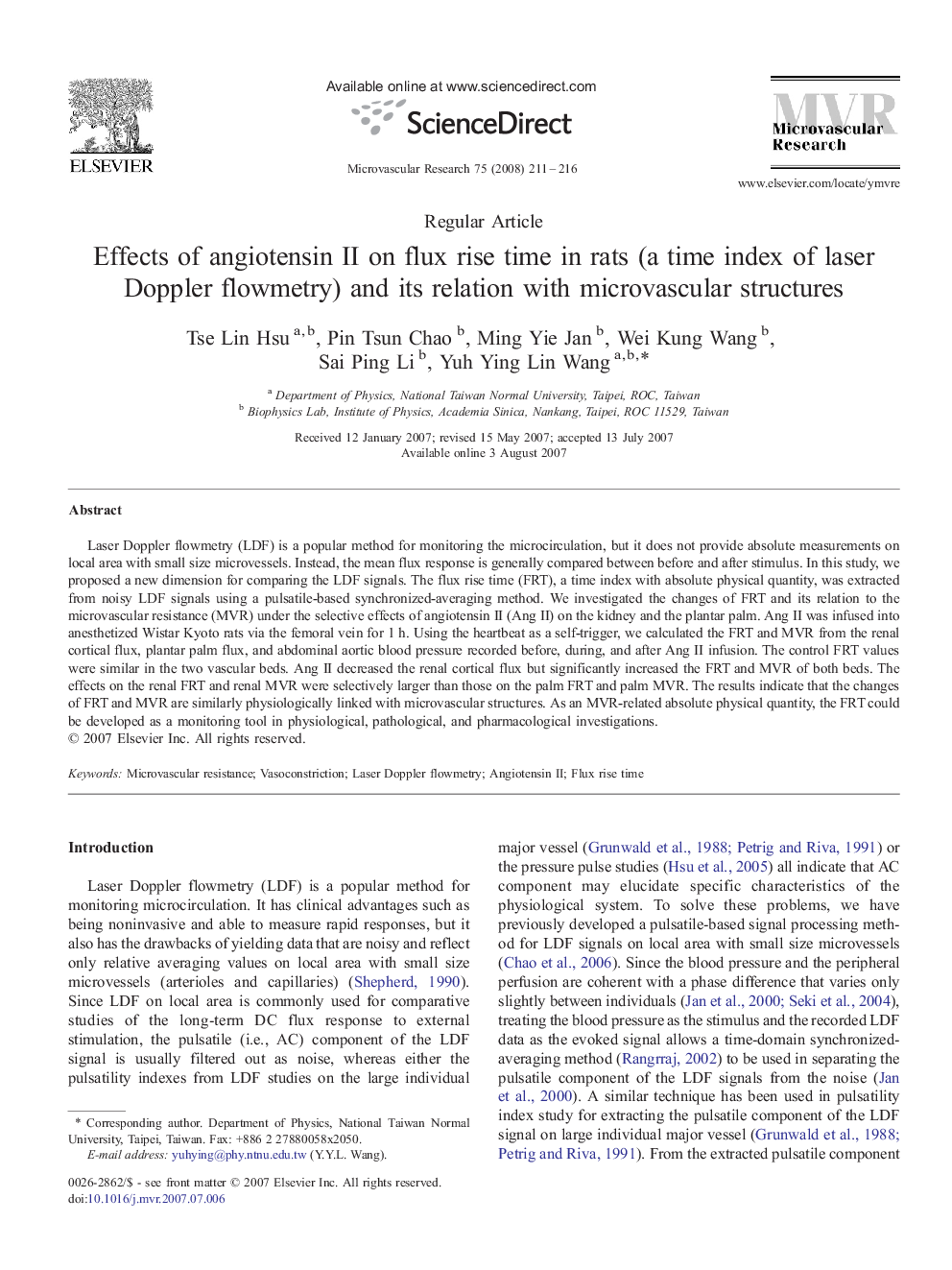| Article ID | Journal | Published Year | Pages | File Type |
|---|---|---|---|---|
| 1995193 | Microvascular Research | 2008 | 6 Pages |
Abstract
Laser Doppler flowmetry (LDF) is a popular method for monitoring the microcirculation, but it does not provide absolute measurements on local area with small size microvessels. Instead, the mean flux response is generally compared between before and after stimulus. In this study, we proposed a new dimension for comparing the LDF signals. The flux rise time (FRT), a time index with absolute physical quantity, was extracted from noisy LDF signals using a pulsatile-based synchronized-averaging method. We investigated the changes of FRT and its relation to the microvascular resistance (MVR) under the selective effects of angiotensin II (Ang II) on the kidney and the plantar palm. Ang II was infused into anesthetized Wistar Kyoto rats via the femoral vein for 1Â h. Using the heartbeat as a self-trigger, we calculated the FRT and MVR from the renal cortical flux, plantar palm flux, and abdominal aortic blood pressure recorded before, during, and after Ang II infusion. The control FRT values were similar in the two vascular beds. Ang II decreased the renal cortical flux but significantly increased the FRT and MVR of both beds. The effects on the renal FRT and renal MVR were selectively larger than those on the palm FRT and palm MVR. The results indicate that the changes of FRT and MVR are similarly physiologically linked with microvascular structures. As an MVR-related absolute physical quantity, the FRT could be developed as a monitoring tool in physiological, pathological, and pharmacological investigations.
Related Topics
Life Sciences
Biochemistry, Genetics and Molecular Biology
Biochemistry
Authors
Tse Lin Hsu, Pin Tsun Chao, Ming Yie Jan, Wei Kung Wang, Sai Ping Li, Yuh Ying Lin Wang,
